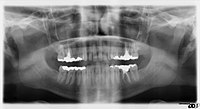
Bioresorbable vascular scaffold use for coronary bifurcation lesions: A substudy from GHOST EU registry
Sign Up to like & getrecommendations! Published in 2017 at "Catheterization and Cardiovascular Interventions"
DOI: 10.1002/ccd.26634
Abstract: The aim of this study was to evaluate midterm outcomes of bioresorbable vascular scaffolds (BVS) implanted in bifurcation lesions. read more here.
Keywords: scaffold use; vascular scaffold; bifurcation lesions; use coronary ... See more keywords

Visual estimation versus different quantitative coronary angiography methods to assess lesion severity in bifurcation lesions
Sign Up to like & getrecommendations! Published in 2018 at "Catheterization and Cardiovascular Interventions"
DOI: 10.1002/ccd.27243
Abstract: To compare visual estimation with different quantitative coronary angiography (QCA) methods (single‐vessel versus bifurcation software) to assess coronary bifurcation lesions. read more here.
Keywords: different quantitative; quantitative coronary; bifurcation lesions; coronary angiography ... See more keywords

Modified jailed balloon technique for bifurcation lesions
Sign Up to like & getrecommendations! Published in 2018 at "Catheterization and Cardiovascular Interventions"
DOI: 10.1002/ccd.27334
Abstract: We propose a new systematic approach in bifurcation lesions, modified jailed balloon technique (M‐JBT), and report the first clinical experience. read more here.
Keywords: jailed balloon; bifurcation lesions; modified jailed; balloon technique ... See more keywords

Comparison of the planned one‐ and elective two‐stent techniques in patients with coronary bifurcation lesions with or without acute coronary syndrome from the COBIS II Registry
Sign Up to like & getrecommendations! Published in 2018 at "Catheterization and Cardiovascular Interventions"
DOI: 10.1002/ccd.27551
Abstract: To evaluate the impacts of stent techniques on long‐term clinical outcomes after percutaneous coronary intervention (PCI) using drug‐eluting stents (DES) for coronary bifurcation lesions in patients with or without acute coronary syndrome (ACS). read more here.
Keywords: without acute; stent techniques; bifurcation lesions; acute coronary ... See more keywords

Management of calcified coronary artery bifurcation lesions
Sign Up to like & getrecommendations! Published in 2020 at "Catheterization and Cardiovascular Interventions"
DOI: 10.1002/ccd.29148
Abstract: Calcified coronary artery bifurcation lesions (CBL) remain a challenge for the interventional cardiologist. Evidence regarding treatment of CBL is minimal. Optimal plaque modification is the most important step prior to stent deployment. Provisional stenting is… read more here.
Keywords: calcified coronary; bifurcation lesions; coronary artery; artery bifurcation ... See more keywords

Side branch fractional flow reserve after provisional stenting of calcified bifurcation lesions: The ORBID‐FFR study
Sign Up to like & getrecommendations! Published in 2020 at "Catheterization and Cardiovascular Interventions"
DOI: 10.1002/ccd.29307
Abstract: We examined the incidence of side branch (SB) compromise after provisional stenting of calcified bifurcation lesions treated with rotational atherectomy (RA) or cutting balloon angioplasty (CBA) and the utility of optical coherence tomography (OCT) to… read more here.
Keywords: provisional stenting; calcified bifurcation; bifurcation lesions; side branch ... See more keywords

Final kissing balloon inflation for coronary bifurcation lesions treated with single-stent technique
Sign Up to like & getrecommendations! Published in 2017 at "Herz"
DOI: 10.1007/s00059-017-4647-1
Abstract: BackgroundThe efficacy of final kissing balloon (FKB) inflation in one-stent techniques for bifurcation lesions is controversial. The goal of the present study was to investigate the impact of FKB on long-term clinical outcomes in one-stent… read more here.
Keywords: kissing balloon; single stent; bifurcation lesions; der ... See more keywords

Provisional Stenting for the Treatment of Bifurcation Lesions: In Vitro Insights
Sign Up to like & getrecommendations! Published in 2021 at "Journal of Cardiovascular Translational Research"
DOI: 10.1007/s12265-020-10088-3
Abstract: Provisional stenting is considered the gold standard approach for most bifurcation lesions, but the benefit of routine side branch (SB) strut dilatation has not been fully elucidated. A benchtop model was used to determine the… read more here.
Keywords: provisional stenting; dilatation; bifurcation lesions; stenting treatment ... See more keywords

Effect of low-density lipoprotein cholesterol on the geometry of coronary bifurcation lesions and clinical outcomes of coronary interventions in the J-REVERSE registry
Sign Up to like & getrecommendations! Published in 2017 at "Cardiovascular Intervention and Therapeutics"
DOI: 10.1007/s12928-017-0498-1
Abstract: We investigated the effect of low-density lipoprotein cholesterol (LDL-C) on the geometry of coronary bifurcation lesions. A total of 300 non-left main bifurcation lesions in 298 patients from J-REVERSE registry were classified according to statin… read more here.
Keywords: effect low; group; bifurcation lesions; geometry ... See more keywords

Clinical outcomes following percutaneous coronary intervention for bifurcation lesions: kissing balloon inflation vs. sequential dilation
Sign Up to like & getrecommendations! Published in 2020 at "Cardiovascular Intervention and Therapeutics"
DOI: 10.1007/s12928-020-00728-5
Abstract: Percutaneous coronary intervention for bifurcation lesions remains challenging, with there being several debatable issues, including the requirement for kissing balloon inflation (KBI). The objective of this study was to assess the clinical outcomes following single… read more here.
Keywords: intervention; dilation; bifurcation lesions; balloon ... See more keywords

Balloon embedded stenting: A novel technique for percutaneous coronary intervention of bifurcation lesions, experience in Indian population
Sign Up to like & getrecommendations! Published in 2018 at "Indian Heart Journal"
DOI: 10.1016/j.ihj.2017.07.010
Abstract: Background Bifurcation lesions account for 15–20% of interventions carried out in a catheterization laboratory. Several techniques have been described for treating bifurcation lesions of which culotte and T-stenting and protrusion(TAP) are commonly used. Both these… read more here.
Keywords: balloon embedded; technique; bifurcation lesions; embedded stenting ... See more keywords